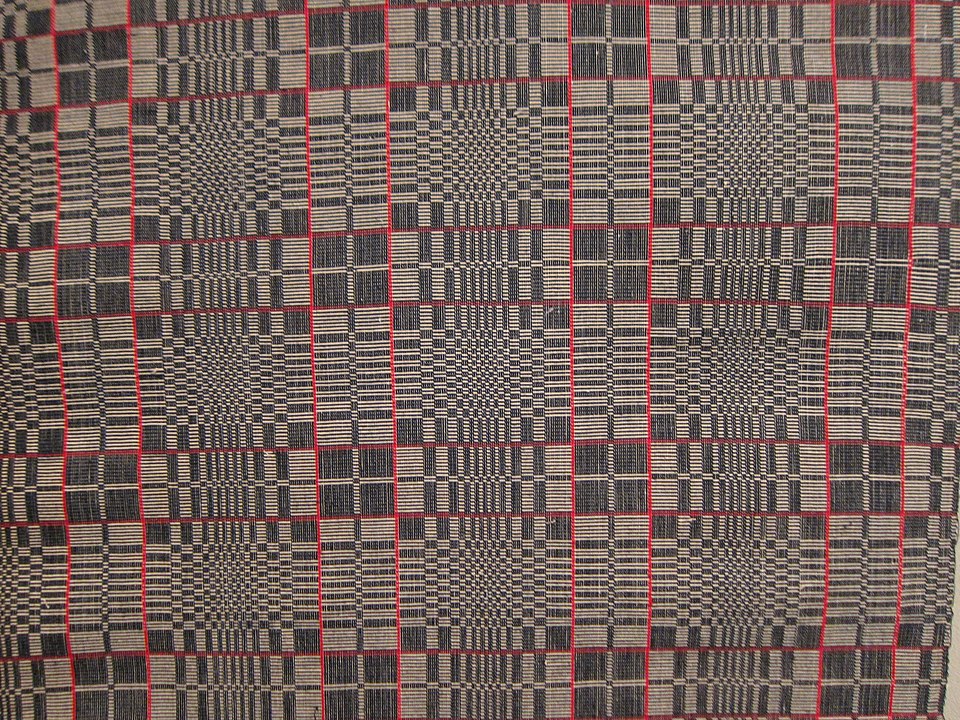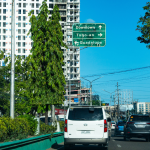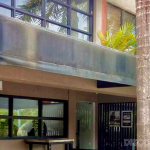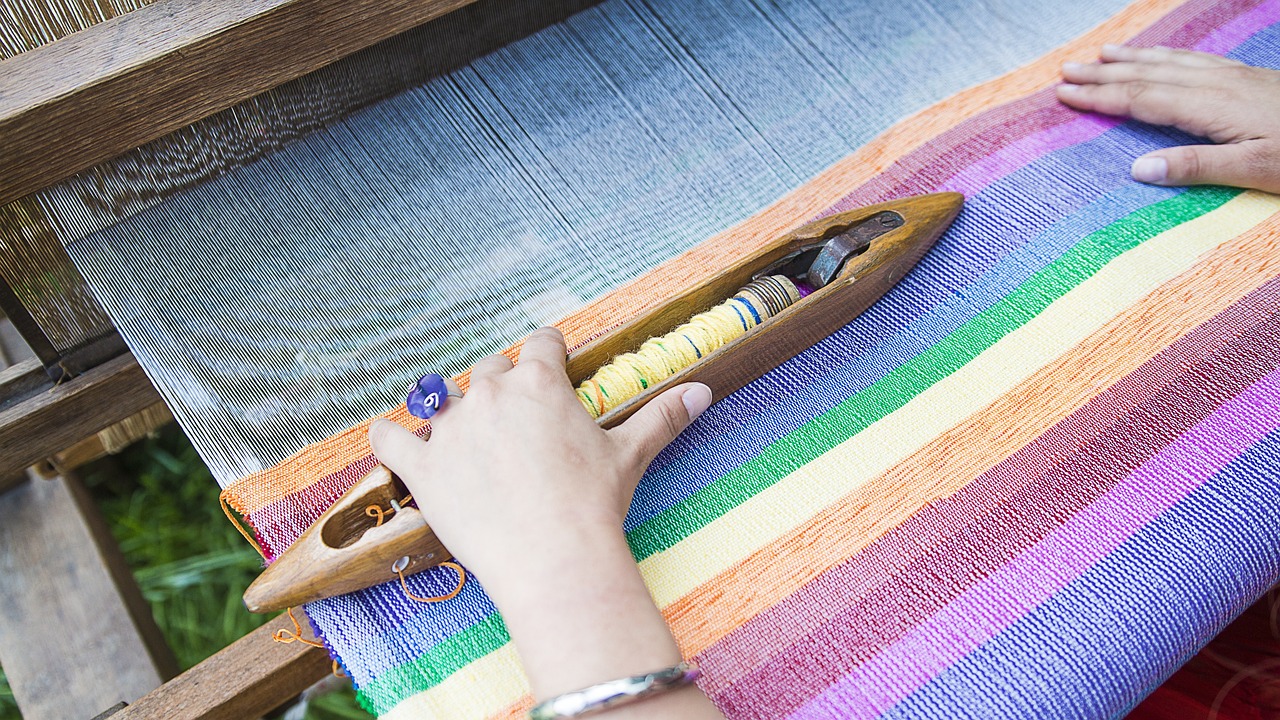In today’s environment of fast-fashion and mechanical looms that can spit out hundreds of meters of fabric each day, hand-loom weaving provides a refreshing and sustainable contrast. Many people are becoming more conscious of the inhumane labor practices and lack of sustainability in the fast-fashion industry. This has caused some fashion brands to begin searching for alternatives. Traditional indigenous Philippine textiles are gaining popularity across the world because of the striking, colorful designs. This has the added benefit of preserving Filipino heritage and weaving techniques through sustainable fabric production.
Textile design in the Philippines has a rich history rooted in connection with both the spiritual realm and the earthly community. Indigenous tribes in the Philippines each have their own traditional patterns and motifs incorporated into their weaving that have meaning to the communities they were created by. The symbolism in each of these patterns is important to understand before using these traditional fabrics.
This is why we researched a few of those patterns and introduce them below, together with companies who are working to keep the tradition and craft alive. You can do your part by spreading the word and by shopping responsibly.
3 Filipino Fabrics made from plants that are more sustainable than cotton
Symbolism in Traditional Philippine Textiles

Binakul pattern
Binakul is a weaving pattern common to Abra and the Ilocos region in northern Luzon. This pattern is created on a pedal frame loom by interlocking two shades of thread – usually white and a darker color – to create various sizes of rectangles. These rectangles are arranged in a repeating pattern across the fabric so that they create an optical illusion of waves, swirls, or circles.
This pattern is meant to ward off evil spirits by causing them to become dizzy and confused. Binakul was commonly used in blankets to protect people from spirits while sleeping.
Matmata pattern
The matmata pattern consists of diamonds, often with double lines, and is sometimes referred to as “eyes of the ancestors.” This design is common among the Bontoc people in northern Luzon. The matmata is a pattern treated with respect as it is meant to help guide someone who has passed away into the afterlife.
This pattern is most often used in burial blankets and clothing worn by the deceased. It is often combined with other patterns, such as the tiktiko triangle or X-shaped pattern, to convey further meaning. When used together, these two patterns indicate abundance and reverence for the deceased.
Bunga sama pattern
Bunga sama is a complex pattern used by the Yakan tribe in the Sulu Archipelago. The Yakans are known for their intricate, geometric textiles incorporating bright colors. The bunga sama in particular incorporates detailed diamond motifs – which are meant to resemble the skin of a python.
As with many of the colorful designs created by the Yakan, the bunga sama design was most often traditionally made into clothing. However, these days this design is commonly found in accessories and home décor items such as table runners and placemats.
Palipattang pattern
The palipattang pattern is another colorful design from the Yakan tribe. This pattern consists of multicolored stripes, often with intricate, smaller designs woven into the stripes. Palipattang is a thread-based representation of a rainbow.
Traditionally, this pattern was used to make the narrow-fitting trousers worn by the Yakan people. However, as with the bunga sama, it is now often sold in the form of placemats, wall hangings, and table runners.
Binituwon pattern
One of the most recognizable patterns is the binituwon – the star symbol used by the Ifugaos from northern Luzon. Stars are thought to be the children of the sun and moon and are regarded with respect. The binituwon symbolizes fertility and abundance, so in many cases women wear belts incorporating the symbol to help them have a child.
Baniya/Bayawak pattern
Another pattern used in traditional weaving from the Ifugao tribe is the bayawak or baniya. This pattern is a literal representation of a lizard that symbolizes the god who came to earth in the form of a lizard to teach the Ifugaos how to irrigate their crops. It also can represent wealth and prestige and is often worn by those who are regarded as elite within the community.
Tinaggu pattern
The tinaggu pattern is also one that takes the form of a more literal interpretation – it is in the shape of a human figure. When incorporated into textiles, this pattern represents the ancestors of the Ifugaos who have moved into the afterlife and become deities or demigods. Blankets and clothing made with fabric incorporating a tinaggu design element are thought to bring protection from the ancestors.
Find stores to buy fabric online!
Keeping Philippine Indigenous Textile Patterns Alive
This small snapshot of traditional Philippine indigenous patterns illustrates the deep meaning and connection these patterns create within the communities they come from. That’s why it’s so important to preserve cultural heritage of weaving and the traditional techniques used to create these textiles.
Handwoven fabrics can’t compete with machine-woven fabrics on a scale basis, but they can compete on sustainability, originality, and artistry. Because of the demands of customers, the fashion industry is finally starting to turn towards a more environmentally friendly model that offers fair pay to artisans along every step of the process. This may provide an opportunity for indigenous Filipino weavers to market their work and maintain these traditional techniques and patterns.
Ethically Sourcing Handwoven Philippine Fabrics
Supporting local Filipino artisans helps to keep traditional weaving techniques alive while providing a livelihood for the weavers. However, it is important to make sure that communities producing these textiles are compensated fairly.
ANTHILL
ANTHILL, which is an ethical, sustainability-focused company based in Cebu City, works with weavers across the Philippines to showcase and sell their handwoven fabrics.
Habi Textile Council
Another great place to support local artisans is at the yearly Likhang Habi Market Fair put on by Habi: The Philippine Textile Council, where you can watch lectures and demonstrations on traditional weaving techniques and weavers can sell their textiles. They are a great source for learning about Philippine indigenous textiles and have a lot of great information on their website.
Narra Studio
Narra Studio introduces itself as a “a POC, Filipina, & woman-owned brand dedicated to the artistry, weaving, and craft heritages of the Philippines.“ In their shop you can find a great selection of barongs, blankets, shirts, but also accessories, bags and presents. Also, check out their article about geometry in weaving patterns.














